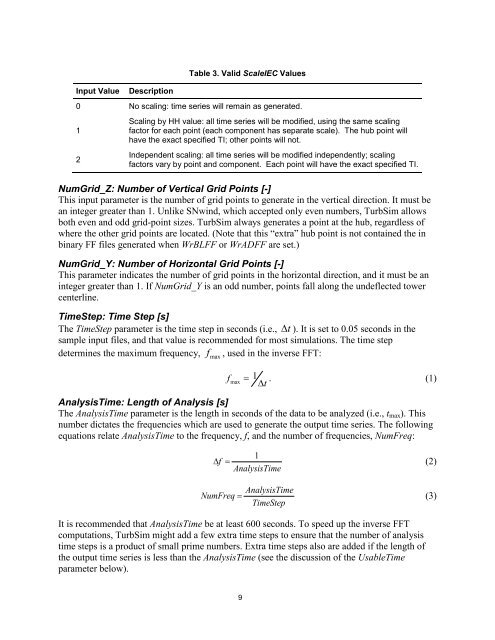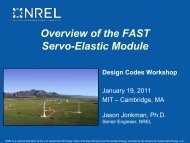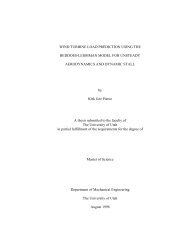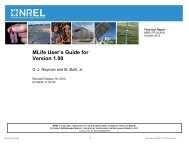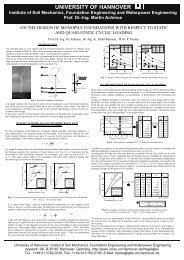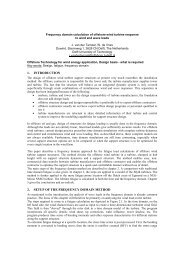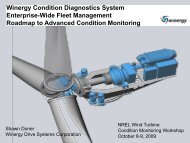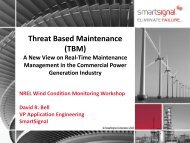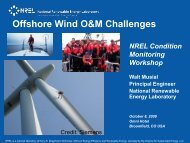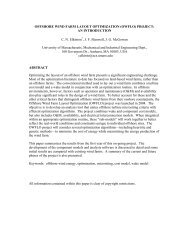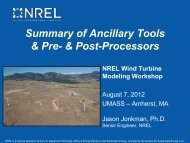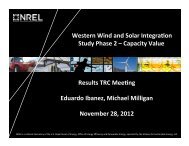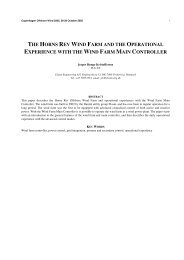TurbSim User's Guide: Version 1.06.00 - NREL
TurbSim User's Guide: Version 1.06.00 - NREL
TurbSim User's Guide: Version 1.06.00 - NREL
You also want an ePaper? Increase the reach of your titles
YUMPU automatically turns print PDFs into web optimized ePapers that Google loves.
Input ValueDescriptionTable 3. Valid ScaleIEC Values0 No scaling: time series will remain as generated.12Scaling by HH value: all time series will be modified, using the same scalingfactor for each point (each component has separate scale). The hub point willhave the exact specified TI; other points will not.Independent scaling: all time series will be modified independently; scalingfactors vary by point and component. Each point will have the exact specified TI.NumGrid_Z: Number of Vertical Grid Points [-]This input parameter is the number of grid points to generate in the vertical direction. It must bean integer greater than 1. Unlike SNwind, which accepted only even numbers, <strong>TurbSim</strong> allowsboth even and odd grid-point sizes. <strong>TurbSim</strong> always generates a point at the hub, regardless ofwhere the other grid points are located. (Note that this “extra” hub point is not contained the inbinary FF files generated when WrBLFF or WrADFF are set.)NumGrid_Y: Number of Horizontal Grid Points [-]This parameter indicates the number of grid points in the horizontal direction, and it must be aninteger greater than 1. If NumGrid_Y is an odd number, points fall along the undeflected towercenterline.TimeStep: Time Step [s]The TimeStep parameter is the time step in seconds (i.e., ∆t ). It is set to 0.05 seconds in thesample input files, and that value is recommended for most simulations. The time stepdetermines the maximum frequency, fmax , used in the inverse FFT:fmax= 1 . (1)∆ tAnalysisTime: Length of Analysis [s]The AnalysisTime parameter is the length in seconds of the data to be analyzed (i.e., t max ). Thisnumber dictates the frequencies which are used to generate the output time series. The followingequations relate AnalysisTime to the frequency, f, and the number of frequencies, NumFreq:1∆ f = (2)AnalysisTimeAnalysisTimeNumFreq = (3)TimeStepIt is recommended that AnalysisTime be at least 600 seconds. To speed up the inverse FFTcomputations, <strong>TurbSim</strong> might add a few extra time steps to ensure that the number of analysistime steps is a product of small prime numbers. Extra time steps also are added if the length ofthe output time series is less than the AnalysisTime (see the discussion of the UsableTimeparameter below).9


